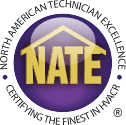
Upgrading Your Home’s Heating, Cooling & Plumbing With The Environment In Mind
In the pursuit of a more sustainable lifestyle, our homes represent a significant opportunity for positive change. With advancements in green technology, it’s now easier than ever to transform our living spaces into eco-friendly havens. In this detailed guide, we’ll explore how to implement green technology in home heating, cooling, and water systems, while highlighting products that reduce environmental impact.
Eco-Friendly Home Heating
Solar Heating
- How it works: Solar heating systems capture sunlight and convert it into usable heat for your home. There are two main types: solar air heating systems and solar water heating systems.
- Features: Solar heating systems typically consist of solar collectors, a heat transfer system, and a storage tank (for water heating systems).
- Types available: Passive heating uses building design and materials to capture and store solar energy without mechanical or electrical devices. Active heating utilizes solar collectors and pumps or fans to circulate heat.
- How to select the right one: Factors to consider include climate, available sunlight, roof orientation, space availability, and local regulations.
- Benefits: Reduces energy bills by utilizing free, renewable energy; lowers carbon footprint by reducing reliance on fossil fuels; long-term savings despite initial installation costs.
Heat Pumps
- How it works: Heat pumps extract heat from the air, ground, or water outside the home and transfer it inside using refrigerant and a compressor.
- Features: Heat pumps come in various types, including air source, ground source (geothermal), and water source. They can provide both heating and cooling.
- Types available: Air source heat pumps extract heat from the outdoor air. Ground sources, or geothermal heat pumps, utilize heat from the ground through buried loops. Water source heat pumps extract heat from a water source like a pond or well.
- How to select the right one: Consider factors such as climate, available space, energy efficiency ratings, and upfront costs.
- Benefits: Highly energy efficient, especially in moderate climates; can provide both heating and cooling, offering year-round comfort; reduced carbon emissions compared to traditional heating systems.
High-Efficiency Furnaces
- How it works: High-efficiency furnaces burn fuel (natural gas, propane, oil) more efficiently than standard furnaces, minimizing waste and maximizing heat output.
- Features: These furnaces often feature advanced heat exchangers, variable-speed blowers, and sealed combustion chambers to optimize performance.
- Types available: Gas furnaces are the most common type and use natural gas or propane. Oil furnaces are less common but still used in some areas.
- How to select the right one: Consider factors such as fuel availability, energy efficiency ratings (AFUE), size of the home, and upfront costs.
- Benefits: Significant energy savings compared to older, less efficient models; more consistent heating and improved indoor air quality; potential for rebates and incentives from utility companies or government programs.
Sustainable Cooling Solutions
Energy-Efficient Air Conditioners
- How it works: Energy-efficient air conditioners use advanced technology to cool indoor spaces while consuming less energy than standard models. They remove heat from indoor air and expel it outside.
- Features: These air conditioners often feature variable-speed compressors, high-efficiency filters, and programmable thermostats to optimize cooling performance and energy usage.
- Types available: Central ACs cool the entire home through ductwork. Ductless mini-split systems provide zone cooling through ducts. Window ACs are suitable for cooling individual rooms.
- How to select the right one: Consider factors such as energy efficiency ratings (SEER), cooling capacity, size of the space, and installation requirements.
- Benefits: Significant energy savings compared to older, less efficient models; improved indoor comfort and air quality; potential for rebates and incentives from utility companies or government programs.
Natural Ventilation
- How it works: Natural ventilation relies on passive methods to cool indoor spaces by utilizing natural airflow, such as windows, doors, vents, and building orientation.
- Features: Incorporates design elements like operable windows, cross-ventilation pathways, and strategic building placement to promote airflow and cooling.
- Types available: Cross ventilation utilizes openings on opposite sides of a building to facilitate airflow. Stack ventilation exploits the natural tendency of warm air to rise and escape through vents or openings at higher levels, drawing in cooler air from lower levels. Night purge ventilation uses cooler nighttime air to flush out heat accumulated during the day.
- How to maximize effectiveness: Consider building orientation, window placement, and landscaping to optimize natural airflow patterns.
- Benefits: Zero energy consumption, reduced utility bills and environmental impact; improves indoor air quality by promoting natural ventilation and reducing reliance on mechanical systems; enhances occupant comfort and connection to the outdoors.
Evaporative Cooling
- How it works: Evaporative cooling systems use the natural process of water evaporation to reduce air temperature. Water is circulated over pads or media, and a fan blows air through them, causing evaporation and cooling.
- Features: Evaporative coolers come in portable and whole-house models, with varying capacities and control options.
- Types available: Direct evaporative coolers cool and humidity the air directly. Indirect evaporative coolers cool the air indirectly by passing it through a heat exchanger cooled by evaporation.
- How to select the right one: Consider factors such as climate, humidity levels, cooling capacity, and maintenance requirements.
- Benefits: Energy-efficient cooling compared to traditional air conditioners, especially in dry climates; lowers indoor temperatures while increasing humidity, providing a comfortable environment; can be used in conjunction with natural ventilation for enhanced cooling and energy savings.
Eco-Conscious Water Systems
Low-Flow Fixtures
- How they work: Low-flow fixtures reduce water usage by restricting flow rates while maintaining adequate water pressure. They are installed in faucets, showers, and toilets to minimize water wastage.
- Types available: Low-flow faucets restrict water flow through aerators or laminar flow devices. Low-flow showerheads reduce water consumption by mixing air with water to maintain pressure. Low-flow toilets use smaller flush volumes or dual-flush mechanisms to conserve water.
- Benefits: Significant water savings, reducing both water bills and environmental impact; maintains adequate water pressure and functionality; helps to alleviate water shortages and strain on water resources.
- Considerations before installation: Check local regulations and building codes regarding flow rates and fixture requirements. Ensure compatibility with existing plumbing systems. Consider user preferences and habits to select the most suitable fixtures.
Rainwater Harvesting Systems
- How they work: Rainwater harvesting systems collect and store rainwater from roofs or other surfaces for non-potable uses such as irrigation, toilet flushing, and laundry.
- Types available: Rain barrels are simple systems that collect rainwater from gutters and downspouts for outdoor use. Cisterns are larger storage tanks that can hold significant volumes of rainwater for various purposes. Green roofs are systems designed to absorb and retain rainwater, reducing runoff and providing additional insulation.
- Benefits: Reduces demand on municipal water supplies, particularly during dry seasons; provides a sustainable water source for landscaping and other non-potable uses.; helps to mitigate stormwater runoff and reduce soil erosion.
- Considerations before installation: Assess local climate and rainfall patterns to determine system feasibility and sizing. Ensure proper filtration and treatment to maintain water quality. Obtain necessary permits and approvals from local authorities.
Greywater Recycling
- How it works: Greywater recycling systems capture and treat wastewater from sinks, showers, and laundry for reuse in irrigation or toilet flushing.
- Types available: Simple greywater systems divert greywater from fixtures to outdoor irrigation systems without treatment. Treatment systems filter and treat greywater to remove contaminants and pathogens for safe reuse.
- Benefits: Reduces freshwater usage by recycling wastewater for non-potable purposes; improves soil moisture and plant health through targeted irrigation; helps to conserve energy and reduce the environmental impact of water treatment.
- Considerations before installation: Evaluate local regulations and health codes regarding greywater reuse. Ensure proper system design and maintenance to prevent contamination and health risks. Educate occupants about greywater usage and safety practices.
Keep Your Home Eco-Friendly With Stellar Techs
Transforming your home into a sustainable haven is easier than you think. Whether you’re ready to upgrade to solar heating, explore energy-efficient cooling solutions, or implement water-saving technologies, Stellar Techs Home Services is here to help. Based out of Hudson, WI, our team of experts specializes in eco-friendly home improvements that prioritize both environmental sustainability and your comfort.
Don’t wait to start your journey towards a greener future. Contact Stellar Techs Home Services at 715-441-9246 today to schedule a consultation and discover how we can tailor our services to meet your eco-friendly home improvement needs. You can also fill out our contact form! Let’s work together to make your home a shining example of environmental stewardship.



